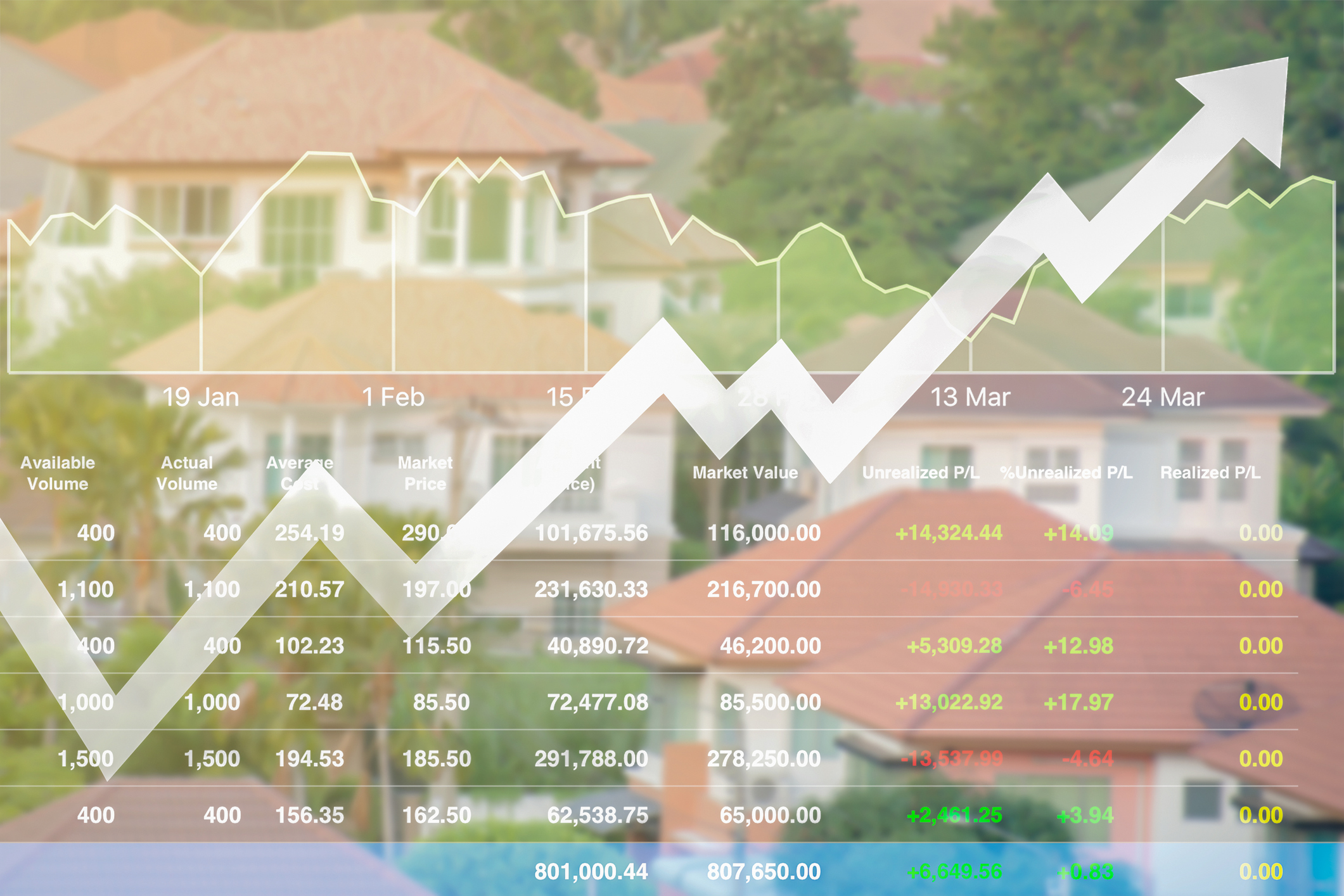Last year, 70% of real estate agents closed zero deals. In today’s shifting economy, even seasoned professionals are feeling the pressure. Rising uncertainty, maturing commercial debt, and hesitant investors are reshaping the real estate landscape—and only the most adaptable will thrive.
Despite lower mortgage rates, market instability is rattling the industry. Over $1 trillion in commercial real estate loans are set to mature this year, and while Baby Boomers control $19 trillion in real estate assets, many are holding back, waiting for clarity. That leaves agents and brokers in a tight spot: how do you stay profitable when the ground keeps moving?
Seasoned agents and newcomers alike need a strategic approach to navigate these challenging times. This piece outlines practical steps to build a recession-resistant real estate business that thrives during economic uncertainty. Let’s take a closer look at strategies that help you keep up with trends.
Understanding the Current Real Estate Market Cycle
Real estate markets follow a predictable cycle with four distinct phases: recovery, expansion, hyper-supply, and recession [1]. Your strategic business decisions during economic uncertainty depend on knowing where you stand in this cycle.
Key economic indicators affecting real estate
Interest rates remain one of the most important factors that shape real estate markets [2]. Rising rates increase mortgage costs and can reduce demand. Real estate often serves as an inflation hedge because property values and rental income typically move with inflation rates [2].
Here are other important indicators you should watch:
- Employment rates: Strong job markets create financially stable homebuyers and drive demand in areas with high employment [3]
- GDP growth: Economic expansion signals boost real estate values through increased investments [3]
- Consumer confidence: People tend to spend more on homes and renovations when confidence levels rise [3]
- Housing starts and building permits: These numbers help predict future real estate activity [4]
Regional market variations during downturns
Economic downturns affect real estate markets differently across regions. Since 1939, regional divergence has explained most U.S. house price movements. This happens because wealthy areas grow faster than poorer ones, including recent boom-bust-boom cycles [5].
“Supernova cities” like Nashville, Raleigh, and Phoenix show stronger resilience during recessions [5]. These markets bounce back faster than others. Nashville and Phoenix recovered almost all their lost jobs by late 2021, while the rest of the U.S. remained down by almost two percent [5].
Historical patterns and recovery timelines
Property prices typically climb 21% within three years after a market bottom, with severe down cycles showing even bigger increases [5]. The current real estate down cycle shows signs of recovery, as U.S. commercial property prices have risen 3% since last year’s bottom [5].
Mortgage rates usually drop during recessions because investors look to bonds for steady returns [6]. Different property types recover at different speeds. Retail spaces lead current return forecasts at 4.8% annually. Industrial and apartment returns follow at 4.0% and 3.4%. Office spaces still struggle with negative returns [5].
These economic real estate trends help you position your business strategically at any point in the market cycle.
Building a Recession-Resistant Business Model
Success in real estate needs more than chasing the next deal. A recession-proof business model protects your income at the time markets slow down and sets you up to grow when they bounce back.
Varying revenue streams beyond transactions
A commission-only approach makes you vulnerable during market downturns. You should think over multiple income sources:
- Rental property investments serve as a natural extension for agents with market knowledge, providing steady monthly cash flow [7]
- Property management services for out-of-state owners who just need tenant relations and maintenance oversight [8]
- Digital products such as e-books or online courses that generate passive income after the original creation [9]
- Coaching newer agents creates extra revenue while deepening your personal brand [10]
These strategies work as a financial buffer against economic volatility, especially when you have recessions that slow traditional transactions [11].
Creating subscription-based services
Subscription models reshape the real estate business from one-time deals to steady revenue streams:
Smart Start Real Estate Group led the way by offering investors flat-fee subscription services instead of percentage-based commissions. Their investors pay fixed amounts to buy and sell properties. This creates predictable expenses and steady income for agents [12].
Homeowners benefit from subscription-based property services that bundle maintenance, utilities, Wi-Fi, and even housekeeping into monthly fees [13]. This approach removes binding leases and builds lasting client relationships rather than one-time interactions.
Developing counter-cyclical business offerings
Counter-cyclical investments shine during economic downturns:
Multifamily properties consistently outperform during recessions because everyone needs housing whatever the economic conditions [5]. CBRE’s data shows that multifamily properties are nowhere near as affected by cyclical downturns as other property types [5].
On top of that, self-storage investments were all but one of these commercial real estate assets that made positive returns during the Great Recession of 2008 [14]. Economic hardships push both consumers and businesses to increase storage demand as families create home offices and companies store unused furniture [14].
These strategies help you build a business model that survives economic uncertainty and maybe even thrives through it.
Implementing Efficient Systems and Processes
Operational efficiency is the foundation of sustainable real estate businesses, particularly in tough economic times. The market’s growing competition and volatility have made optimized systems a necessity, not just an option.
Automating administrative tasks
Manual processes waste precious time and directly affect your profits in today’s real estate market. Smart property management teams now use technology to simplify their everyday tasks:
- Document management systems securely store and access key documents like contracts, licenses, and agreements from anywhere
- Automated rent collection platforms process payments through secure portals, generate automatic receipts and track late fees
- Transaction management software optimizes contract processing and deadlines
- Marketing automation tools schedule and distribute content across multiple platforms simultaneously
Automation of these functions gives you more time to build relationships and focus on strategic activities. It also reduces human error risks in critical areas like payment systems and lease management.
Creating scalable team structures
Your operational framework needs to grow with your business. Start by defining each team member’s role through written job descriptions. This helps everyone understand their responsibilities and reporting relationships.
Build an organizational flow (not just a traditional hierarchy) that shows where team members can find support or answers. This decision-making structure offers clear guidance while allowing creative freedom within defined systems.
Developing standardized client management protocols
A standardized approach to client interactions delivers consistent service quality no matter who manages the relationship. To cite an instance, a detailed CRM system that centralizes client information and tracks interactions can help achieve this goal.
Create specific protocols for:
- Tenant communications and response timeframes
- Property showings and follow-ups
- Transaction documentation and compliance
- Client privacy and data protection
Note that standardization doesn’t mean losing the personal touch—it creates reliable frameworks that support exceptional service while protecting your business during economic real estate fluctuations.
Managing Finances During Economic Uncertainty
Financial stability is the life-blood of surviving economic downturns in real estate. Statistics show that half of all companies fail to meet their cost reduction targets [15]. Real estate professionals must become skilled at financial management to navigate uncertain times.
Cash flow management strategies
Real estate income can be unpredictable, which makes careful cash flow tracking vital. A solid management system helps you build reserves for slow periods and spot problems early [16]. Your business needs rolling cash flow forecasts to predict future positions and prepare for possible shortfalls [17]. The accuracy of tracking financial health improves when you automate cash flow processes [17].
Timing makes all the difference for real estate developers. Market conditions directly affect buyer demand and property prices [1]. Regular financial reporting gives you clear insights into your business’s health. These insights let you make quick adjustments to improve cash flow [17].
Smart cost-cutting without sacrificing growth
Smart cost reduction helps maintain state-of-the-art solutions and operational efficiency. Here’s what works best:
- Look at your tech stack and remove tools you don’t need or switch to pay-per-use pricing models [18]
- Let specialists handle bookkeeping or marketing instead of hiring full-time staff [19]
- Talk to vendors about better rates and optimize your operational costs [20]
- Study how space gets used and unite areas where possible [15]
Notwithstanding that, marketing budgets should stay intact during downturns. Competition gets fiercer for fewer leads, making visibility more important than ever [7].
Building a financial safety net
Today’s real estate market demands cash reserves. Your accessible accounts should hold 3-6 months of living expenses [21]. People with variable income might want to extend this to 12 months [22].
Broaden your income through side work, freelancing, or passive income from rental properties [21]. Your contingency plan should include emergency funds for unexpected costs [23]. Insurance coverage needs regular reviews as it protects your financial future [21].
These strategies will build a strong financial foundation. They help you handle economic real estate changes while setting up opportunities for future growth.
Conclusion
A stable real estate business needs careful planning and strategic execution during economic uncertainty. Your market cycle awareness and understanding of regional markets help you make informed decisions as conditions change.
You can best defend against market volatility through smart diversification. Successful real estate professionals create multiple revenue streams beyond traditional transactions. They invest in rental properties, subscription services, and counter-cyclical investments.
Clear systems and standardized processes are the foundations of business stability. Your team can focus on growth when you automate tasks, establish clear team structures, and follow consistent client management protocols. This approach helps maintain service quality in challenging times.
Strong financial preparation leads to long-term success. You can build reserves to handle market fluctuations with careful cash flow management and strategic cost control. Schedule a meeting with us to learn about your numbers and stay on track!
Note that economic downturns create opportunities if you prepare well. Your success in any market depends on how well you adapt, run efficient operations, and manage finances wisely.
FAQs
Q1. How can I diversify my real estate business to withstand economic downturns? Consider expanding into rental property investments, offering property management services, creating digital products like e-books or online courses, and coaching newer agents. These diverse income streams can provide financial stability during market fluctuations.
Q2. What are some key economic indicators I should monitor in the real estate market? Keep an eye on interest rates, inflation, employment rates, GDP growth, consumer confidence, and housing starts. These indicators can help you understand market trends and make informed business decisions.
Q3. How can I improve my business’s operational efficiency during uncertain times? Implement automation for administrative tasks, create scalable team structures with clear roles and responsibilities, and develop standardized client management protocols. These steps can streamline your operations and free up time for strategic activities.
Q4. What financial strategies should I adopt to build a recession-resistant real estate business? Focus on effective cash flow management, create rolling cash flow forecasts, implement smart cost-cutting measures without sacrificing growth, and build a financial safety net with 3-6 months of living expenses in accessible accounts.
Q5. Are there any real estate sectors that tend to perform well during economic downturns? Multifamily properties and self-storage investments have historically shown resilience during recessions. Multifamily housing remains in demand regardless of economic conditions, while self-storage often sees increased demand during economic hardships.

